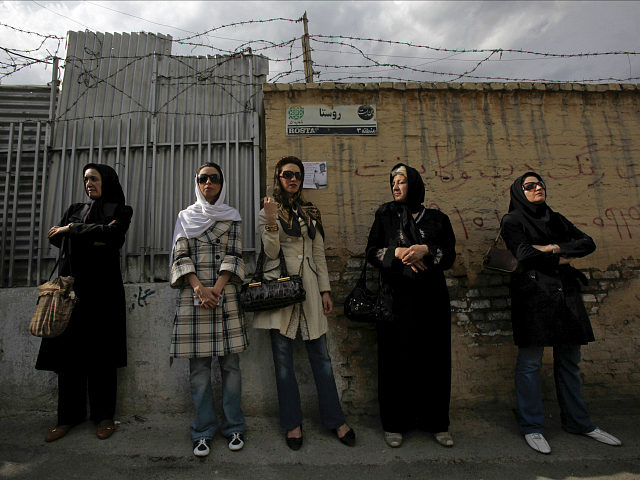Iranian police have shut down over 800 clothes shops to prevent them from selling “unconventional” women’s coats known as a “manteau.”
The IRNA news agency reports that another 3,000 shops have been slapped with warnings that they could face a similar fate, according to the AFP.
A manteau is traditionally a black or brown, buttoned overcoat which reaches the knee level and is meant to conceal the shape of a body’s woman. As the AFP points out, “under Iranian law, women must wear a manteau, or similar item, that loosely covers the whole body from the neck down to the knee.”
However, some designers have applied a more liberal, fashionable twist to it over the past few years altering the manteau’s more conservative design by removing the buttons, making the sleeves shorter, revealing the wrist and making them more form-fitting.
Among them is Farnaz Abdoli, who sparked this manteau movement by pushing the boundaries with her colorful and more liberal-looking designs.
The designs have sparked outrage among Iranian authority figures. The Daily Mail notes that Iranian MP Zohreh Tabibzadeh, a dentist and hardliner female politician, claimed the fashion items — some of them with the word “Queen” on them — were part of a “calculated plan” to subvert traditional values.
“This is an ugly manifestation of a Western trend that has entered our country with evil intentions devised behind the scenes,” Tabibzadeh said during an interview with an Iranian publication in July.
An article written on Les Persiennes goes through some of the ways the mandatory “manteau” became a fashion accessory in the Islamic Republic of Iran.
Users on social media expressed their sentiment regarding the IRI’s strict dress code:
https://twitter.com/nsaharm/status/745202490782650370
This manteau is one of several designs that caused trouble for some of the 800 shops that likely carried them. It has the phrase “Keep Calm I’m Queen” written on it, as many of the more fashionable manteaus do, but also has short arms and no buttons on the front. It also appears to be form-flattering; all three things are strictly prohibited:
Iranian fashion designer, Sara Alamzadeh, recently created a manteau that illustrated the ancient Persian love story and tragedy of “Shirin and Farhad” (also known as “Khosrow and Shirin”) — a tragic love story about the Sasanian King Khosrow II who fell in love with Armenian princess Shirin, whom he made his queen. The star-crossed lovers were eventually buried together in the same grave.
Iran’s strict dress code has lent itself to the prevalence of plastic surgery in the Islamic Republic. As Dr. Ali Asghar Shirazi, an ENT specialist in Iran, explained during an interview with the Economist, “For ladies who have to cover themselves apart from the face, it is the only thing they can show.” The Economist noted further that “A boob job will only get you so far if you have to spend most of the day shrouded in a manteau, the mackintosh-like outer garment almost all Iranian women wear.”
A psychological field study out of Iran, conducted by Farid Pazhoohi and Robert Burriss, asked a 25-year-old woman to stand on a busy, well-lit street in Shiraz, Iran for two Monday nights to see how many drivers would stop their vehicles to offer the woman a ride. The study is called “Hijab and ‘Hitchhiking.'”
During the first week, she wore a black hijab and form-fitting clothing underneath it which revealed the shape of her body. She had 214 male drivers stop to offer her a ride. However, when she dressed more conservatively, wearing a black chador which concealed her body form, she had just 39 drivers stop to offer her a ride. She stood at a well-lit street in Shiraz, Iran, on two consecutive Monday nights until 1000 cars had passed.
“Men are more likely to offer help to women they find attractive, and differences in clothing are sufficient to drive this effect,” the researchers wrote. They added: “Our results extend the findings of previous studies in Europe and North America on male helping behavior and female attractiveness to Iran, a nation where courtship behavior and dress are constrained by stricter social mores and laws than apply in the West.”
Follow Adelle Nazarian on Twitter and Periscope @AdelleNaz.

COMMENTS
Please let us know if you're having issues with commenting.